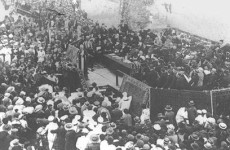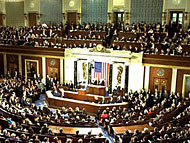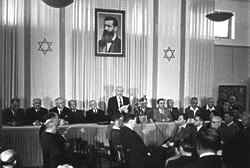
On May 15, 1948, day after the creation of the State of Israel, the armies of Egypt, Syria, Jordan, Iraq, Saudi Arabia and Lebanon invaded the new Jewish state.
Israel’s War of Independence is the first war between the State of Israel and the neighboring Arab countries. It started on the eve of the establishment of the state (May 14, 1948) and continued until January 1949. The war broke out following the rejection of the United Nation’s Partition Plan, Resolution 181 of the General Assembly (November 29, 1947), by the Arab states and the Arab Higher Committee. The representatives of the Arab states threatened to use force in order to prevent the implementation of the resolution.
Stage 1: November 29, 1947 – March 31, 1948
Arab violence erupted the day after the ratification of Resolution 181. Shots were fired on a Jewish bus close to Lod airport, and a general strike declared by the Arab Higher Committee resulted in the setting fire and the plundering of the Jewish commercial district near the Jaffa Gate in Jerusalem. There were still 100,000 British troops stationed in Palestine, which were much stronger than both Arab and Israeli forces. Nevertheless, the British policy was not to intervene in the warfare between the two sides, except in order to safeguard the security of British forces and facilities. During this period, Arab military activities consisted of sniping and the hurling of bombs at Jewish transportation along main traffic arteries to isolated Jewish neighborhoods in ethnically mixed cites and at distant settlements.
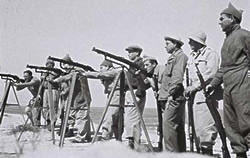
The Hagana, the military arm of the organized Yishuv, (the Jewish community of Palestine) put precedence on defensive means at first, while being careful to restrict itself to acts of retaliation against perpetrators directly responsible for the attacks. On the other hand, the Etzel (an armed Jewish underground organization), an opponent of the Hagana which did not accept the authority of the official institutions, carried out acts of retaliation less discriminately, such as the planting of a bomb in the Arab marketplace. Between December 1947 and January 1948, the Arabs, with the help of volunteers from neighboring Arab countries, made attempts to conquer distant Jewish settlements (Kfar Etzion, Tirat Zvi, Kfar Szold) but were warded off by the Jewish defenders. Acts of terror, with the help of British deserters, were more successful particularly in Jerusalem. These acts included the explosion of the national institutions building, the editorial offices of the Palestine Post, and several buildings on Ben-Yehuda Street. In January 1948, a voluntary military force lead by Fawzi el Kawukji entered Palestine and took control of the Arab populated north. Other volunteers, mostly belonging to the Muslim Brotherhood of Egypt entered Hebron and Bethlehem in the south. Kawukji’s troops, the “Army of Salvation,” numbered in January 1948 about 2,000 troops and it was estimated that their number reached 5,000 – 8,000 troops in February. This force dispatched officers and small units to cities (Jerusalem, Jaffa) that were expected to be conquered by Jewish forces. Jewish settlements in the north where also attacked (Tirat Zvi, Mishmar Hayarden, Ramat-Yochanan), with limited military results. Jewish vehicles on the main roads came under attack as well which resulted in the cutting off of some remote settlements from Jerusalem, the Negev from Tel-Aviv and the western Galilee from Haifa. These attacks nearly achieved political success: On March 19, 1948 the United States suggested to impose on Palestine temporary trusteeship rule by the United Nations instead of partition.
Stage 2: April 1, 1948 – May 14, 1948
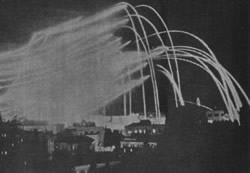
Due to political and military reasons, the Hagana’s command decided to take the initiative and gain control of the territory allocated to the Jewish State and establish effective communication lines with Jewish settlements outside of those boundaries. “Operation Nachshon” reopened the road to the besieged Jewish section of Jerusalem, although only briefly. The Hagana captured the entire city of Tiberias in which there were besieged Jews in the old city (April 18), Haifa (April 22), the area connecting Tel-Aviv with her outlying neighborhoods, the Jerusalem neighborhoods Katamon and Shech Jarach (Shech Jarach was later vacated as a result of an ultimatum by the British), the Western Galilee, the entire city of Safed (the Jewish quarter was under siege). British intervention prevented the conquest of Jaffa by Jewish forces (the city surrendered later in May).
Though the irregular nature of the warfare prevented the taking of prisoners, usually the rights of Arab inhabitants not participating in combat were preserved. In Haifa for example, the Jewish authorities did the utmost to prevent the mass exodus of Arabs. In other cases, like Dir Yasin, an Arab village on the western outskirts of Jerusalem, that was captured by the Etzel and the Lechi, there was no effort to prevent the killing of innocent residents. The opposite actually occurred – it has been claimed that the killing was intentional and was carried out to expedite the flight of the Arab population.
A number of Arab attacks, such as that on the convoy descending from Hadassah Hospital on Mount Scopus in Jerusalem, resulted in many casualties, but without strategic gains. Kawukji’s “Army of Salvation” was in fact defeated at this stage. The creation of a continuous strip of Jewish-controlled territory contributed to the decision by the president of the United States to suspend the trusteeship plan and enabled the proclamation of the State of Israel on May 14, 1948.
Stage 3: May 15, 1948 – June 10, 1948
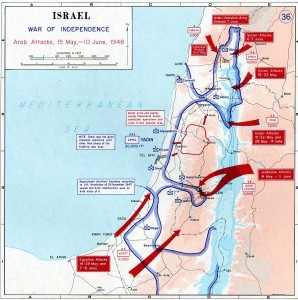 On May 15, Egyptian airplanes struck Tel-Aviv. This attack signaled the invasion of Israel by the Arab states’ regular armies. The Arab states’ original decision was to assist the Arabs of Palestine by sending volunteers, money, arms and logistic aid, while placing their regular troops along the border. There was no intention of a full invasion. This decision was changed, in contrary to military estimates, in the first half of June. King Farouk of Egypt forced the decision on his government and Army which opposed the invasion. The decision to invade was mostly Egyptian. One of the main reasons of the Egyptians was to thwart a supposed plan by king Abdullah of Jordan to annex territories on the west bank of the Jordan River. The original plan of the invading armies, that was not properly coordinated, was a northern movement by Egyptian forces towards Tel-Aviv, advancement of Syrian, Lebanese and Iraqi forces towards Haifa, and the conquest of the west bank and Jerusalem by Jordan’s Arab Legion.
On May 15, Egyptian airplanes struck Tel-Aviv. This attack signaled the invasion of Israel by the Arab states’ regular armies. The Arab states’ original decision was to assist the Arabs of Palestine by sending volunteers, money, arms and logistic aid, while placing their regular troops along the border. There was no intention of a full invasion. This decision was changed, in contrary to military estimates, in the first half of June. King Farouk of Egypt forced the decision on his government and Army which opposed the invasion. The decision to invade was mostly Egyptian. One of the main reasons of the Egyptians was to thwart a supposed plan by king Abdullah of Jordan to annex territories on the west bank of the Jordan River. The original plan of the invading armies, that was not properly coordinated, was a northern movement by Egyptian forces towards Tel-Aviv, advancement of Syrian, Lebanese and Iraqi forces towards Haifa, and the conquest of the west bank and Jerusalem by Jordan’s Arab Legion.
The entry of five regular armies into the battle created a critical problem for the Hagana (the IDF was officially established only on June 27), which did not yet have artillery, armor, or an air force. The Egyptian army advanced along the coast, attacking some Jewish settlements on the way (Nirim, Kfar Darom) and circumventing others (Nizanim, Yad Mordechai). They were halted only 35 kilometers from Tel-Aviv by a hastily enlisted force aided by the first fighter airplanes that arrived from Czechoslovakia. The Arab Legion captured The Etzion Bloc, Beit Ha’Arava, and the potassium plants on the northern shore of the Dead Sea. Two settlements north of Jerusalem were evacuated. The Legion entered Jerusalem and captured, after a struggle, the isolated Jewish Quarter in the Old City, but failed repeatedly in its attempts to invade the western areas of Jerusalem. The Hagana failed in its attempts to expel the Legion from Latrun, which overlooked the road to besieged Jerusalem. Instead, an alternate road was paved to Jerusalem: The “Burma Road” saved the city from certain starvation and surrender.
The Syrian army captured Masadeh and Sha’arei Golan south of the Sea of Galilee, but were repelled at the gates of Degania by homemade “Molotov Cocktails” and sightless artillery that arrived from France. The Syrians then turned northward and established a bridgehead at Mishmar Ha-yarden, west of the Jordan River. Malchia was captured by the Lebanese army, which did not really continue to participate in the battle after that.
In the beginning of June, the Arab forces lost the advantage, and hope for a swift victory dissipated. At the same time, Israeli forces suffered heavy casualties. Therefore, both sides were relieved by the decision of the UN Security Council to call for a 28-day truce implemented on June 10.
Stage 4: June 10, 1948 – July 18, 1948
When the fighting resumed on July 8, the situation had radically changed. Heavy equipment, which was purchased before the establishment of the State of Israel but that entered the country only after the end of the British Mandate, was finally utilized by the IDF. The organization and operation of the army units were restructured. Israel took the initiative in the north. “Operation Dekel” resulted in gaining control of the lower Galilee including Nazareth, but “Operation Brosh” was only partially successful in reducing the Syrian bridgehead near Mishmar Ha-yarden. At the central front, “Operation Danny” led to the capture of Lod and Ramle (including the essential airport) that were in the hands of the Arab Legion. The second stage of the operation was meant to secure Latrun and Ramala to form a wider corridor to Jerusalem, but failed to do so. The attempt to capture the Old City of Jerusalem failed as well. Heavy fighting on all fronts did lead to significant changes to the battle lines.
The Egyptians in the south managed again to close the main road to the Negev. A fierce battle was waged in proximity of Kibbutz Negba, near the Hebron-coast road. An alternate route was opened, used at night for Jewish transportation between the north and south (the Egyptians used the east – west route that crossed it during the day). The advantage was now in the hands of Israel, and the Arabs, through the British delegate to the Security Council, requested an unlimited truce. The truce went into effect after 10 days of battle, on July 18.
Stage 5: July 19, 1948 – 5 January, 1949
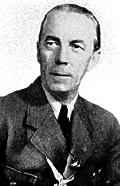
During the second truce, Count Bernadotte, the UN mediator for Palestine, made unsuccessful efforts to achieve a political solution. In the meantime an army of more than 100,000 troops was assembled by Israel. Every sixth Israeli was enlisted. As the result of Egyptian efforts to cut off the Negev militarily and Bernadotte’s proposal to remove the Negev from the boundaries of the State of Israel, on October 15, the IDF in a swift operation, (“Operation Yoav”) managed to reopen the road to the south and capture Be’er-Sheva on October 21. Egyptian forces situated in the Hebron Mountains and on the southern slopes of Jerusalem were now cut off from their bases. The IDF, in “Operation To-The-Mountain” widened the narrow and unsafe corridor to Jerusalem from the south.
The irregular Arab forces, which never agreed to the truce, continued in the meantime their activities of harassment against Jewish forces and settlements in the north. The Israeli counter-offensive, “Operation Hiram” (October 29-31), resulted in the capture of the upper Galilee by the use of a pincer movement from Safed to the east and from the seashore in the west. Areas in Lebanon were also occupied adjacent to the upper Galilee. The objective of “Operation Horev” (December) was to drive out the remaining Egyptian forces from Israel. IDF forces advanced south through the desert to the village of Uja on the border and into the Sinai desert, reaching the sea south of the Gaza Strip. Joint British -American pressure forced Israel to withdraw from the Sinai, but its forces regrouped east of the border with Gaza. At this point, when Egyptian forces in the Gaza Strip were in danger of being cut off, and the routes to Egypt were undefended, Egypt agreed on January 5, 1949 to conduct negotiations for an armistice which had been demanded by the UN Security Council already on November 16, 1948. A new truce was effective on January 7, while one Egyptian brigade, which had a young staff officer named Jamal Abdel Nasser remained besieged and cut off in a small “pocket” around Falouja.
The War of Independence caused heavy Israeli losses: More than 6,000 dead including almost 4,000 soldiers – almost 1% of the total population. Arab loses are estimated at about 2,000 regular invading troops and an unknown number of irregular Palestinian forces.


